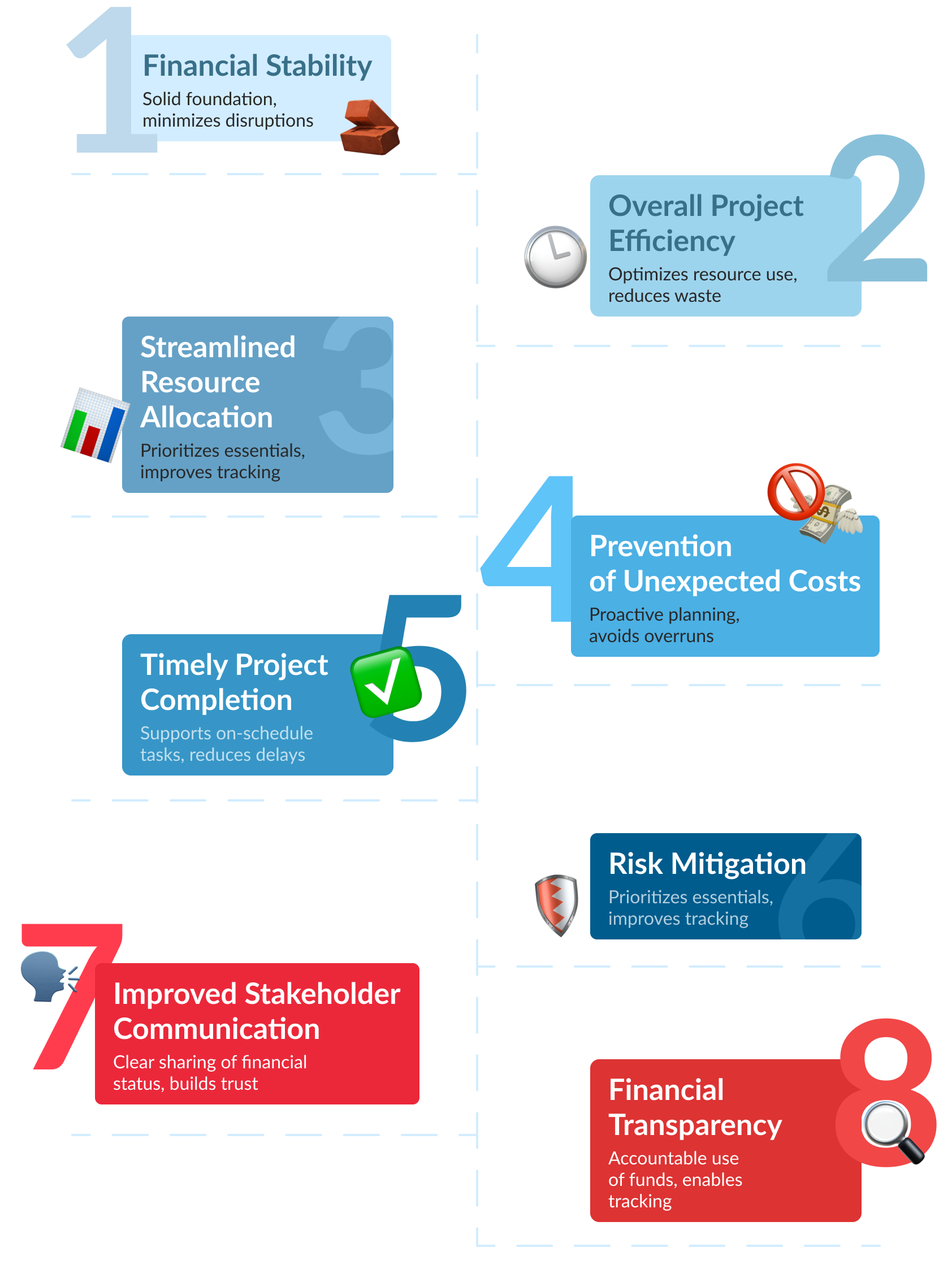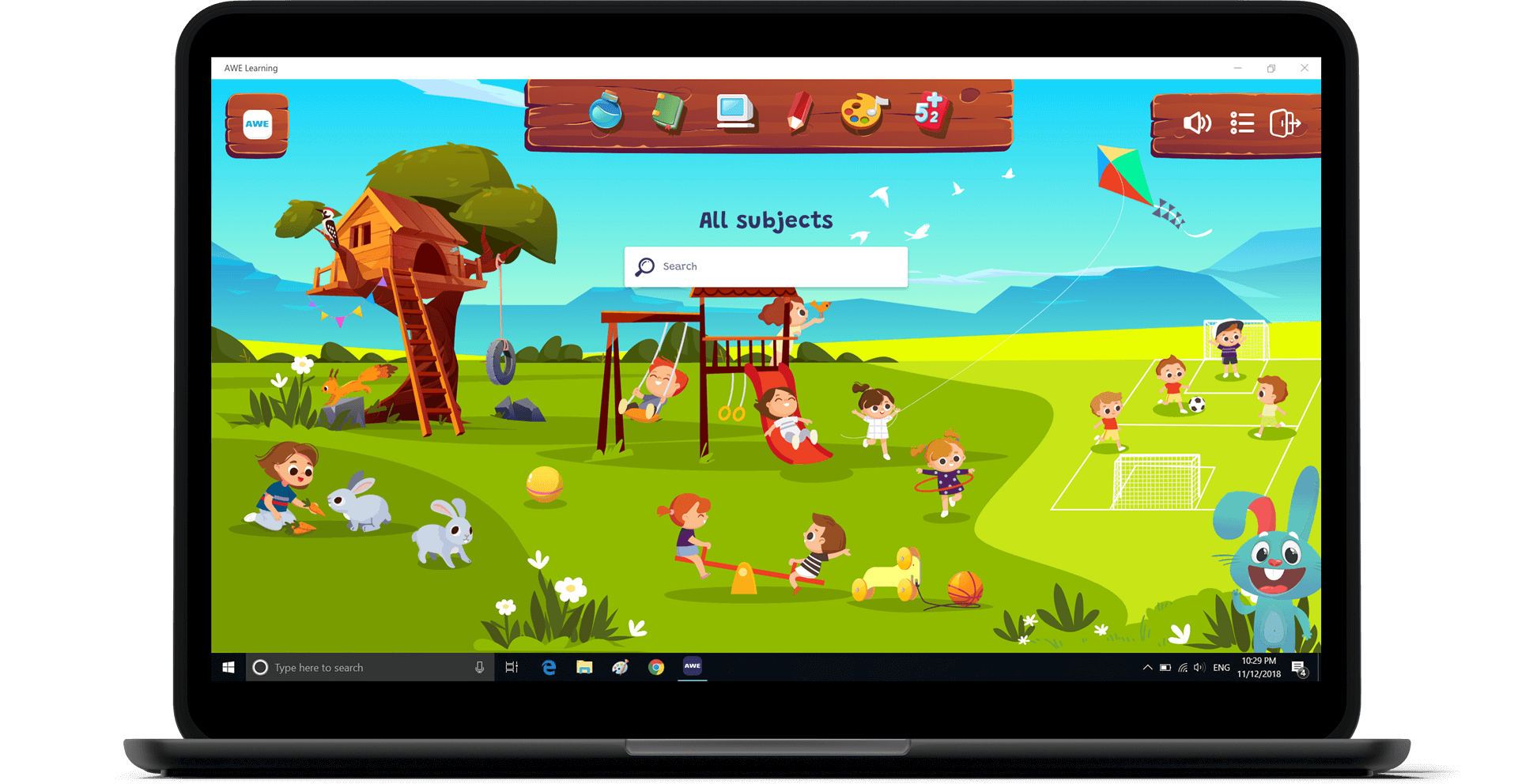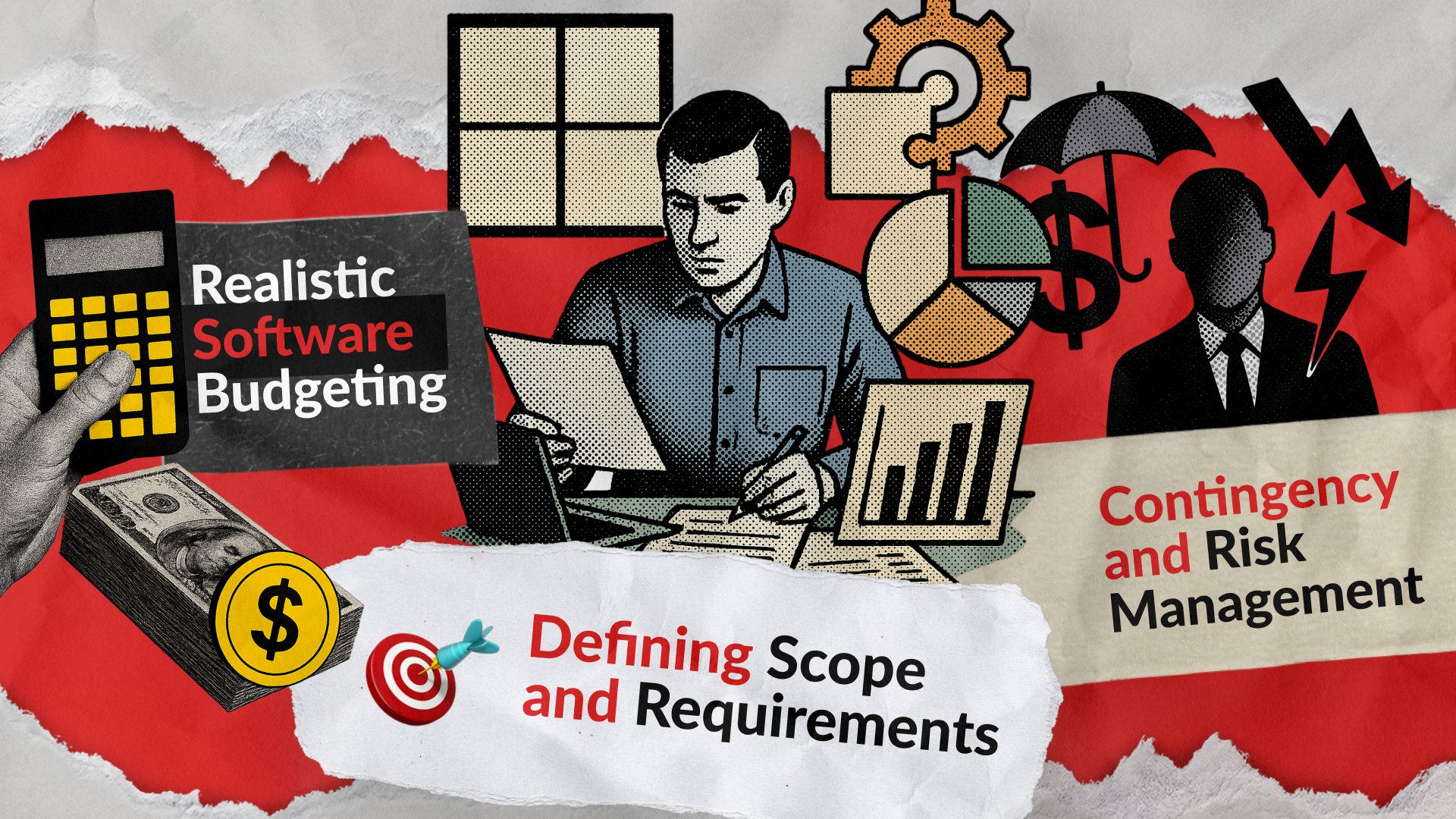Afraid your project will fail due to the pitfall of overbudgeting? It’s an entirely legitimate fear, seeing as Statista found that 47% of enterprise resource planning projects exceed their budgets. Incompatible budgeting happens because the department heads who create them do so in isolation. They often lack the crucial input of the development team, key stakeholders, and real-world data from past projects.
When a software development budget is inadequately planned, projects may face critical resource shortages or inevitable delays. In the worst-case scenario, they’re subject to outright project failure. Redwerk’s 20+ years of experience in software project delivery is the foundation for this guide, which reveals our proven key factors and actionable steps for precise software budget planning.
Key Considerations for Realistic Software Project Budgeting
Focusing on the key areas below will help you implement strategies for evaluating your financial plan, and ensuring that it reflects the complexities of your software development project. We’ve gathered the most essential aspects to help you confirm the accuracy of your budget, or create an adequate budget from scratch.

Defining Scope and Requirements
The foundation of any successful software budget lies in a crystal-clear understanding of the project’s objectives, as well as the precise requirements needed to achieve them. Without this groundwork, even the most meticulous financial planning can quickly unravel.
Formulate Project Goals and Objectives. Begin by articulating what the software aims to accomplish. What problems will it solve? What value will it deliver? For example, suppose the project is to develop a new inventory management system. In that case, the primary goal might be to provide real-time inventory tracking across all locations, enhancing supply chain transparency.
Create Documentation. Detailed documentation serves as the blueprint for the entire project. It outlines the software’s functionalities, technical specifications, and anticipated user interactions. Think of this step as creating a detailed specification document that leaves no room for ambiguity.
Distinguish Between Necessary and Desirable Features. To manage costs effectively, it’s crucial to differentiate between core functionalities essential for the initial launch (often part of the Minimum Viable Product—MVP) and desirable features that can be implemented in later iterations. Prioritizing “must-haves” helps control the initial software project costs.
Gather Comprehensive Requirements. Effective software development planning hinges on thoroughly gathering all requirements. This means engaging with all relevant stakeholders—from end-users to business owners—through interviews, workshops, and surveys to capture a complete picture of their needs and expectations. For instance, conducting user interviews can reveal crucial insights into the features that would provide the most value.
Document / Update Requirements. The gathered requirements should be meticulously documented and treated as a living document. As the project evolves, requirements may need to be revisited and updated to reflect new insights or changes in business needs.
Use Clear Language. It’s crucial that the project’s goals, objectives, and value proposition are communicated clearly and concisely. They must resonate with all potential stakeholders, including those who may not be technically inclined. This helps secure buy-in and ensures everyone understands the “why” behind the development budget. For example, instead of saying, “We will implement a RESTful API,” explain, “The new system will seamlessly integrate with our existing marketing platform, eliminating work in silos and saving 30% of marketers’ time.”
Structuring the Project
Effective software project planning requires a clear roadmap. The first step is dividing the project into logical, manageable segments. This breakdown simplifies the development process and allows for more accurate cost estimation at a granular level.
Divide into Phases. Segmenting the project into distinct phases is crucial regardless of the chosen software development methodology. For instance, a Waterfall approach might include phases like Requirements Gathering, Design, Development, Testing, and Deployment. Conversely, an Agile methodology typically involves iterative sprints. The key is to establish clear boundaries and deliverables for each phase.
Identify Work Packages. Each phase must be divided into smaller, more manageable tasks or work packages. These should be specific and have clearly defined objectives. For example, within the “Development” phase of a CRM project, individual tasks could include “Develop user authentication module,” “Implement lead tracking functionality,” or “Integrate with email service.”
Define Dependencies Between Tasks. Understanding the relationships between tasks is vital for creating a realistic project timeline and budget. Some tasks may be dependent on the completion of others. Identifying these dependencies ensures that the project schedule and resource allocation are logical. For instance, the “Testing” phase cannot commence until a particular module’s “Development” phase is complete.
Estimating Resources
Accurate software budget planning requires a comprehensive understanding of all the resources necessary to complete the project. Overlooking even seemingly minor requirements can lead to significant budget discrepancies.
Human Resources. Be sure to include all personnel involved, such as front-end and back-end developers, UI/UX designers, quality assurance engineers, project managers, business analysts, and potentially specialized roles like DevOps engineers or security experts. The composition and size of the team will directly impact the software development budget. Something else to consider is the affect on budget from utilizing an in-house team or an external vendor.
Equipment and Software. Consider the hardware needed for development and testing, the software licenses, development tools (IDEs, testing frameworks), and collaboration platforms required by the team. For example, specific mobile devices for testing might be needed if the project involves mobile app development.
External Services and Third-Party Integrations. Many modern software projects rely on external APIs, libraries, or services for specific functionalities (e.g., payment gateways and mapping services). The costs associated with these integrations, including licensing fees or usage charges, must be factored into the development budget.
Consider Availability and Skill Sets. When planning a software development project, it’s crucial to assess the availability of team members with the required skills. For instance, if a project requires expertise in a niche technology, securing developers with that specific skill set might involve higher costs or longer lead times, impacting the overall software project costs.
Estimating Time
Accurately estimating the time required for each development task is critical to ideating a realistic software development budget. Underestimating timelines can lead to budget overruns, while overestimating can result in inefficient resource allocation.
Collaborate on Time Estimates. Work closely with project managers and team leaders to gauge the effort needed for each identified task and activity. Their experience and understanding of the technical complexities are invaluable in this process.
Leverage Historical Data. A cornerstone of accurate time estimation is using historical data from similar past projects. By analyzing how long comparable features or tasks took in previous endeavors, you can establish realistic benchmarks for the current project. For example, if an earlier project’s lead tracking functionality took 60 hours, this data could inform the time estimate for a similar feature in the current project.
Consider Time-Tracking Software. Implementing time-tracking software can provide valuable insights into how developers spend their time, revealing patterns and potential bottlenecks. This data can then be used to refine future time estimates and improve overall team productivity.
Involve the Development Team. Task completion time varies significantly based on individual developer experience, skill sets, and working styles. Therefore, involving the development team in the scoping and estimation process is crucial for creating a more reliable development budget. A senior developer might estimate a complex algorithm implementation to take 20 hours, while a more junior developer might estimate 30 hours for the same task.
Calculating the Costs
With a clear understanding of the required resources and the estimated time for each task, the next crucial step in software budget planning is accurately calculating the associated costs. The goal of this step is to formulate a detailed breakdown of all potential expenditures.
Break Down Costs by Resource. For each resource identified, itemize the associated expenses.
- Salaries and Benefits. These constitute a significant portion of the software development budget. Include all team members’ wages and associated benefits like health insurance, retirement contributions, and paid time off.
- Overhead. Account for indirect costs necessary for the project’s execution but not directly tied to a specific task. Overhead can include office space rental, utilities, administrative support, and management expenses. By cooperating with a software development agency, all these overhead costs can be leveled.
Distinguish Between Direct and Indirect Costs. Categorizing costs can provide better financial visibility.
- Direct Costs are expenses directly attributable to the project, such as developer salaries, software licenses specifically for the project, and the cost of cloud hosting.
- Indirect Costs are shared expenses that benefit multiple projects or the entire organization, like general administrative costs or office supplies. A portion of these costs should be allocated to the development budget.
Include Technology and Integration Costs. Don’t overlook the costs associated with the technology stack.
- Hardware. Factor in the cost of any new hardware required for development or testing environments.
- Software Licenses. Include the expenses for necessary software licenses, development tools, or specialized software.
- Third-Party Integrations. Incorporate any associated licensing fees, subscriptions, or usage charges if the project requires integration with external services or APIs. For example, integrating a payment gateway might involve transaction fees.
Contingency and Risk Management
Even with the most meticulous planning, software development is inherently susceptible to unforeseen challenges. Building a resilient software budget requires proactively accounting for potential disruptions and having strategies in place to address them.
Allocate a Contingency Budget. Setting aside a portion of the total budget as a contingency fund is prudent to absorb unexpected setbacks. This fund is a buffer to handle unforeseen issues without jeopardizing the financial plan.
Identify Potential Risks. Conduct a thorough risk assessment early in the project lifecycle. Brainstorm potential issues that could negatively impact the timeline or budget. Examples include:
- Technical Challenges. Discovering unforeseen complexities during development that require more time or specialized expertise.
- Requirement Changes. Scope creep or changes in stakeholder needs that necessitate additional development work.
- External Dependencies. Delays or issues with third-party services or APIs that the project relies on. For instance, if a critical payment gateway API undergoes unexpected downtime or requires significant integration changes, it could impact the project timeline and costs.
- Team Turnover. Unexpected departures of key team members lead to recruitment and onboarding costs and potential delays.
Develop Mitigation Strategies. For each identified high-impact risk, develop a plan to minimize its likelihood or influence. For example, if there’s a high risk of a critical third-party service experiencing downtime, a mitigation strategy might involve researching and having a backup service readily available. Similarly, for potential scope creep, implementing a robust change management process can help control and assess the budgetary impact of new requests.
Post-Deployment Costs
Launching a software project isn’t quite the finish line for budget considerations. Neglecting the ongoing expenses of maintaining and supporting the application can lead to significant financial strain. Therefore, your initial software budget must account for these crucial post-deployment costs.
Maintenance. The software requires regular maintenance to ensure its continued functionality, security, and stability. The maintenance includes bug fixes, security updates to address vulnerabilities, and updates to ensure compatibility with evolving operating systems or browsers.
Support. Additional aid in addressing user queries, troubleshooting issues, and creating documentation or training materials. The level of support required will influence the ongoing operational expenses. For instance, a customer-facing application might need a dedicated support team, impacting the development budget over time.
Scalability. As the user base grows or business needs evolve, the software may need to be scaled to handle increased load and new features. Scaling can come in the form of upgrading server infrastructure, optimizing the database, or re-architecting specific components. Failing to plan for scalability can lead to performance issues and necessitate costly emergency upgrades. For example, an e-commerce platform experiencing a surge in traffic during peak seasons might require temporary scaling of server resources, incurring additional infrastructure costs.
Potential Infrastructure Upgrades. Over time, the software’s underlying infrastructure might need to be upgraded or replaced. This could involve updating servers, databases, or network equipment to maintain performance, security, and compatibility with newer technologies. These periodic upgrades should be factored into the long-term planning of software development projects, and their associated financial implications.
Documentation and Approval
The final but crucial step in the software budget planning process is formally documenting the budget and securing the necessary approvals. This ensures alignment among all stakeholders and provides a reference point throughout the project.
Document All Relevant Elements. A comprehensive budget document should detail all aspects of the financial plan. It must include a breakdown of estimated costs for each phase, task, and resource, the allocated contingency fund, and any assumptions made during the estimation process. For example, the documentation should clearly state the estimated hours for each development task and the corresponding hourly rates.
Communicate Clearly for Review and Approval. Once the budget is documented, it must be communicated to all stakeholders with a vested interest in the project’s financial success. These personas typically include project sponsors, department heads, and the development team. Presenting the budget in a well-organized and understandable format, potentially using visual aids, will facilitate review and approval.
Emphasize Tracking and Risk Monitoring. Budget documentation shouldn’t be static, it needs to serve as a tool for ongoing monitoring of project finances. Clearly outline how actual spending will be tracked against the budgeted amounts. Furthermore, the documentation should highlight identified risks and the corresponding contingency plans. Regularly reviewing the budget against actual expenditures while monitoring identified risks will allow for proactive adjustments and help keep the software development budget on track.
Expertise and Transparency in Software Budgeting
At Redwerk, we understand the intricacies of software development and the critical role that accurate budgeting plays in delivering exceptional results. Since 2005, we’ve delivered over 250 projects to businesses across North America, Europe, Africa, and Australia.
We’ve consistently helped clients establish realistic budgets that align with their strategic goals, minimizing the risk of costly overruns. From initial ideation and planning to deployment and ongoing maintenance, you can count on our tech guidance and support.
Our expertise includes:
- UX/UI Expertise: We have hands-on experience estimating UX/UI design efforts. See how we helped Taskly revamp their old designs before launching in a new market.
- Software Development from Scratch: We can build projects from the ground up. See how we helped Recruit Media develop an AI-powered recruitment platform, supporting them from ideation to deployment.
- Developing Functional Specifications: Even if you’re not ready to delegate a full-fledged development to us, we can provide expert assistance in creating precise functional specifications, laying the groundwork for a successful project, as we did for Prozorro Marketplace.
We offer free project estimations. Share your project details with us, and we’ll schedule a call. We’ll only need a few days to finalize your project estimation. So, what are you waiting for? Take the stress out of software development budgeting, and contact us today for a free consultation.
Learn how we helped AWE Learning build their e-learning SaaS for kids, which is used by 50% of US public libraries




